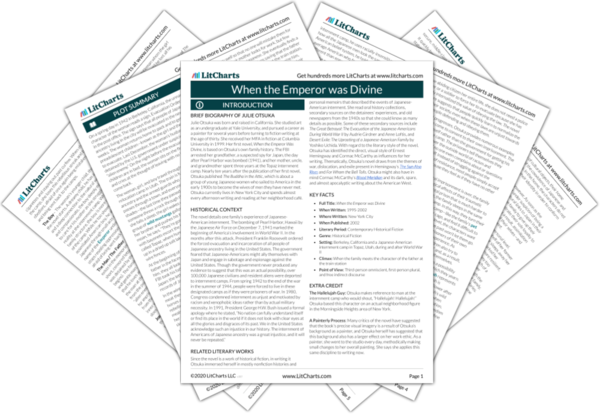The woman’s rosebush, the principal symbol in the novel’s second to last chapter, represents the ideal of freedom. While the family was interned at the Topaz camp, the rosebush was stolen from the woman’s front yard. When the family returns after the war, the children scour the neighborhood looking for it, only to conclude that someone has transplanted it to a backyard somewhere. The novel ends with the children imagining the rosebush “blossoming madly, wildly, pressing one perfect red flower after another out into the late afternoon light.” Overtly, the rosebush represents a hypothetical world where the family had never faced internment or racism, and could grow freely and without restraint. Yet in the real world of the novel, the rosebush and the freedom it represents are stolen from them. Afraid of being mistaken as enemies of the state again, after internment the children restrain their true identities so as to appear like docile, apologetic, and apolitical citizens. However, the fact that the children imagine the rosebush in a “stranger’s backyard” rather than in a front yard suggests that the stranger is too ashamed to openly display the stolen rosebush. In this way, the stolen rosebush becomes a metaphor for one of the United States’ greatest shames: the stealing of the freedoms and the potentials of its Japanese-American citizens.













